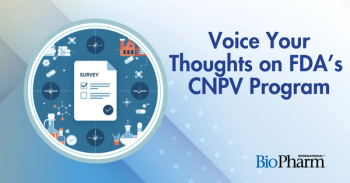
- BioPharm International's BP Elements, June 2023
- Volume 2
- Issue 6
New QSAR Model for Predicting Blood Brain Barrier Permeability
FDA’s Division of Applied Regulatory Science’s (DARS) computational toxicology and pharmacology research has been focused on the development of highly curated data sets and QSAR models for endpoints of regulatory interest.
Through quantitative structure-activity relationship (QSAR) models, predictions can be made for a drug substance itself, intermediates, prioritizing experimental inquiries into the potential effects of newly identified drugs of abuse, and more. FDA’s Division of Applied Regulatory Science’s (DARS) computational toxicology and pharmacology research has been focused on the development of highly curated data sets and QSAR models for endpoints of regulatory interest.
Two statistical-based QSAR models were developed by DARS to predict drug permeability across the blood brain barrier (BBB) with the purpose to assist regulators with abuse liability assessment of drug metabolites or other materials related to drug substances. According to FDA, these models are useful in predicting whether an unknown substance of abuse can permeate the BBB to produce effects predicted by the Public Health Assessment via Structural Evaluation (PHASE) approach. The agency defines PHASE as a multi-component computational approach that determines if newly emerging drug substances on the street-drug market are at a risk to public safety, according to a press release.
Researchers from DARS developed reliable QSAR models by harvesting data for approximately 1000 molecules from multiple publicly available data sources. Further, the models were trained exclusively on results from in-vivo experiments in rodents where the ratio of drug in the brain to that in blood or plasma was determined. Then, two different commercial software packages were used to construct the models, and classification thresholds were chosen for both models based on the tradeoff between the specificity and sensitivity of their predictions.
The models and databases developed through the DARS are used internally by the agency to inform and support regulatory decisions for drug products, and they are available to the public through commercial QSAR software vendors with whom FDA’s Center of Drug Evaluation and Research has formal Research Collaboration Agreements, according to the press release.
Source:
Articles in this issue
over 2 years ago
Difficulties in Expanding CAR-T Cell Therapy into Solid Tumorsover 2 years ago
Sartorius and Waters Expand Analytics Collaborationover 2 years ago
Domino Data Lab Expands AI Platformover 2 years ago
Lonza Acquires Synaffix in ADC Dealover 2 years ago
ProBioGen Launches Lentivirus Packaging Cell Lineover 2 years ago
TriLink Biotechnologies Introduces CleanCap M6 AnalogNewsletter
Stay at the forefront of biopharmaceutical innovation—subscribe to BioPharm International for expert insights on drug development, manufacturing, compliance, and more.





